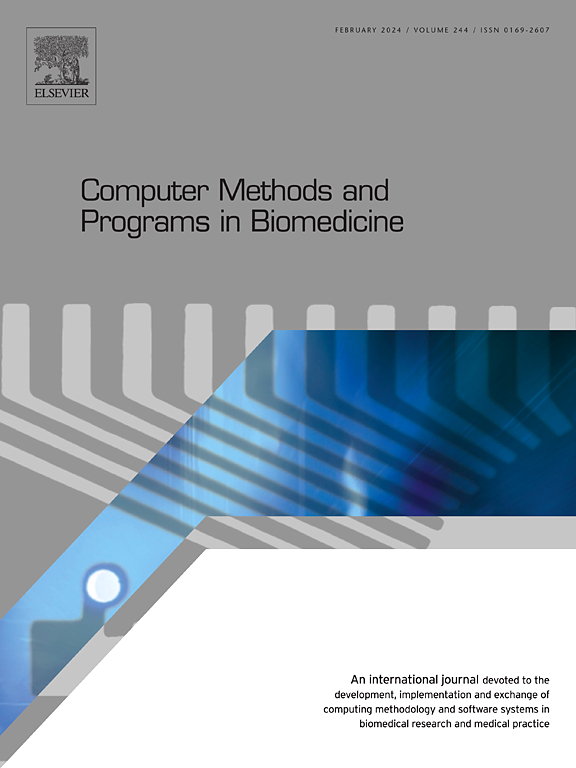VAE-Surv: A novel approach for genetic-based clustering and prognosis prediction in myelodysplastic syndromes
IF 4.9
2区 医学
Q1 COMPUTER SCIENCE, INTERDISCIPLINARY APPLICATIONS
引用次数: 0
Abstract
Background and Objectives
Several computational pipelines for biomedical data have been proposed to stratify patients and to predict their prognosis through survival analysis. However, these analyses are usually performed independently, without integrating the information derived from each of them. Clustering of survival data is an underexplored problem, and current approaches are limited for biomedical applications, whose data are usually heterogeneous and multimodal, with poor scalability for high-dimensionality.
Methods
We introduce VAE-Surv, a multimodal computational framework for patients’ stratification and prognosis prediction. VAE-Surv integrates a Variational Autoencoder (VAE), which reduces the high-dimensional space characterizing the molecular data, with a deep survival model, which combines the embedded information with the clinical features. The VAE embedding step prioritizes local coherence within the feature space to detect potential nonlinear relationships among the molecular markers. The latent representation is then exploited to perform K-means clustering. To test the clinical robustness of the algorithm, VAE-Surv was applied to the Genomed4all cohort of Myelodysplastic Syndromes (MDS), comparing the identified subtypes with the World Health Organization (WHO) classification. The survival outcome was compared with the state-of-the-art Cox model and its penalized versions. Finally, to assess the generalizability of the results, the method was also validated on an external MDS cohort.
Results
Tested on 2,043 patients in the GenomMed4All cohort, VAE-Surv achieved a median C-index of 0.78, outperforming classical approaches. In addition, the latent space enhanced the clustering performance compared to a traditional approach that applies the clustering directly to the input data. Compared to the WHO 2016 MDS subtypes, the analysis of the identified clusters showed that the proposed framework can capture existing clinical categorizations while also suggesting novel, data-driven patient groups. Even tested in an external MDS cohort of 2,384 patients, VAE-Surv achieved a good prediction performance (median C-index=0.74), preserving the interpretability of the main clinical and genetic features.
Conclusions
VAE-Surv enables automatic identification of patients’ clusters, while outperforming the traditional CoxPH model in survival prediction tasks at the same time. Applied to MDS use case, the obtained genetic-based clusters exhibit a clear survival stratification, and the application of the clinical information allowed high performance in prognosis prediction.
求助全文
约1分钟内获得全文
求助全文
来源期刊

Computer methods and programs in biomedicine
工程技术-工程:生物医学
CiteScore
12.30
自引率
6.60%
发文量
601
审稿时长
135 days
期刊介绍:
To encourage the development of formal computing methods, and their application in biomedical research and medical practice, by illustration of fundamental principles in biomedical informatics research; to stimulate basic research into application software design; to report the state of research of biomedical information processing projects; to report new computer methodologies applied in biomedical areas; the eventual distribution of demonstrable software to avoid duplication of effort; to provide a forum for discussion and improvement of existing software; to optimize contact between national organizations and regional user groups by promoting an international exchange of information on formal methods, standards and software in biomedicine.
Computer Methods and Programs in Biomedicine covers computing methodology and software systems derived from computing science for implementation in all aspects of biomedical research and medical practice. It is designed to serve: biochemists; biologists; geneticists; immunologists; neuroscientists; pharmacologists; toxicologists; clinicians; epidemiologists; psychiatrists; psychologists; cardiologists; chemists; (radio)physicists; computer scientists; programmers and systems analysts; biomedical, clinical, electrical and other engineers; teachers of medical informatics and users of educational software.
 求助内容:
求助内容: 应助结果提醒方式:
应助结果提醒方式:


